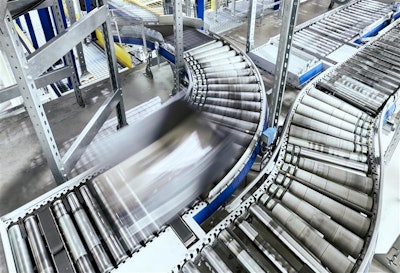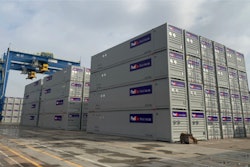
Over the past two years, the price of aluminum has increased by more than $1,000/MT, touching $2,700/MT in December 2021. The main reasons for the hike are substantial increase in energy and raw material costs, growing demand, decline in China’s production capacity, reduction in global inventories and the impact of the Coronavirus disease (COVID-19). The scenario is expected to continue in 2022, with the average price projected to increase 5-10%.
Increase in cost of energy
In 2021, the weighted average cost of electricity rose 2-3 times to CNY0.51/kwh in December from CNY0.18/kwh in January. Recently, a marginal decline in thermal coal prices reduced the cost pressure on aluminum plants with in-house power generation facilities. However, at the broader level, the proportion of electricity costs in the total cost of aluminum production increased from 33% to 38%. The substantial increase in energy cost prompted smelters around the world to cut down the production of aluminum.
Rising electricity costs, coupled with decline in production, are expected to keep prices high in 2022 as well.
Increase in raw material prices
Alumina prices remained relatively unchanged in H1 2021 but increased 30-40% in H2 due to higher cost of production and reduction in manufacturing in Henan and Shanxi. The output of alumina, the primary material used in refining aluminum, was also affected due to supply disruptions in Brazil and Jamaica. Furthermore, alumina prices are expected to rise 4-5% in 2022 compared to 2021 due to limited supply and high cost of production.
The shortage of bauxite, another crucial raw material, is expected to persist in 2022, considering the cutdown in production by Australia, the second largest producer of bauxite in the world.
The price of pre-baked anode rose sharply from July 2020 to November 2021 due to an increase in the prices of petroleum coke and coal tar. The average price increased more than 50% to CNY5,636/MT from January 2021 to December 2021.
The continuous increase in alumina, bauxite and pre-baked anoda prices would further push up the price of aluminum in 2022.
Declining production in China and inventories
China accounts for 57% of the global supply of aluminum and exports 5-6 million tons annually. However, to achieve its carbon neutrality goals, China capped capacity at 45 million tons in 2021.
Another factor that contributed to the decrease in China's output is restrictions on energy consumption. The government ordered smelters to reduce production in its bid to lower the quarterly usage of energy. Also, explosion at a 300,000-ton capacity factory in Yunnan brought production in the facility to a halt, thereby, affecting the country’s overall production.
To meet domestic demand, China imported about 1.27 million tons of aluminum in 2021. Lower production in China, coupled with the increase in its aluminum imports, created an inventory shortage globally. The cumulative inventory of stocks on the London Metal Exchange (LME) fell to 893,775 tons, the lowest level since 2007.
Marginal increase in supply (outside of China)
Aluminum production outside of China rose marginally by 1.7% to 21.97 million tons in the first 10 months of this year. However, due to a strike at the Kitimat smelter in Canada, North America’s overall production took a hit, falling 1.8% over January-October.
Aluminum production is forecasted to grow at an average annual rate of 1.8% in 2022, reaching nearly 69 million tons by the end of the year. Gains are expected to be driven by additional capacity in China and reopening of plants by major manufacturers.
Increase in demand with change in economic scenario
Demand for aluminum is anticipated to increase as well, contributing to the rise in prices. Demand for the metal is expected to rise 3-4% globally in 2022, as economic growth resumes across regions, boosting demand for various commodities.
Demand would be majorly driven by recovery in car production globally, construction projects in Europe and the United States, increase in the production of electrical equipment, including semiconductors, and increased use of renewable energy equipment such as wind and solar power generators.
Impact of COVID-19
In 2021, China and Australia were engaged in a trade spat after Australia called for an international investigation into the origin of the COVID-19 pandemic. China imposed a de-facto ban on several imports from Australia, including coal and bauxite, which further pushed prices (such as that of aluminum) up. The emergence of the newest variant of COVID-19, Omicron, could lead several countries to impose certain restrictions, even in 2022. This may cause disruptions to production, supply and logistics, spiking up prices of metals such as aluminum.
Aluminum supply is expected to remain tight through the middle of the next year, until the supply chain normalizes and supply of electricity improves. China’s focus on energy conservation has created a supply crunch in the market. The cap on annual production by the Chinese government and rising raw material prices are further pushing up prices. Rising demand for specific grades from various end-use industries, such as automotive and construction, would also contribute to the rise in prices. The price of aluminum is expected to touch $3,000 per ton in a few months, averaging $2,770-2,900 per ton.




![Pros To Know 2026 [color]](https://img.sdcexec.com/mindful/acbm/workspaces/default/uploads/2025/08/prostoknow-2026-color.mduFvhpgMk.png?auto=format%2Ccompress&bg=fff&fill-color=fff&fit=fill&h=100&q=70&w=100)







![Pros To Know 2026 [color]](https://img.sdcexec.com/mindful/acbm/workspaces/default/uploads/2025/08/prostoknow-2026-color.mduFvhpgMk.png?ar=16%3A9&auto=format%2Ccompress&bg=fff&fill-color=fff&fit=fill&h=135&q=70&w=240)





